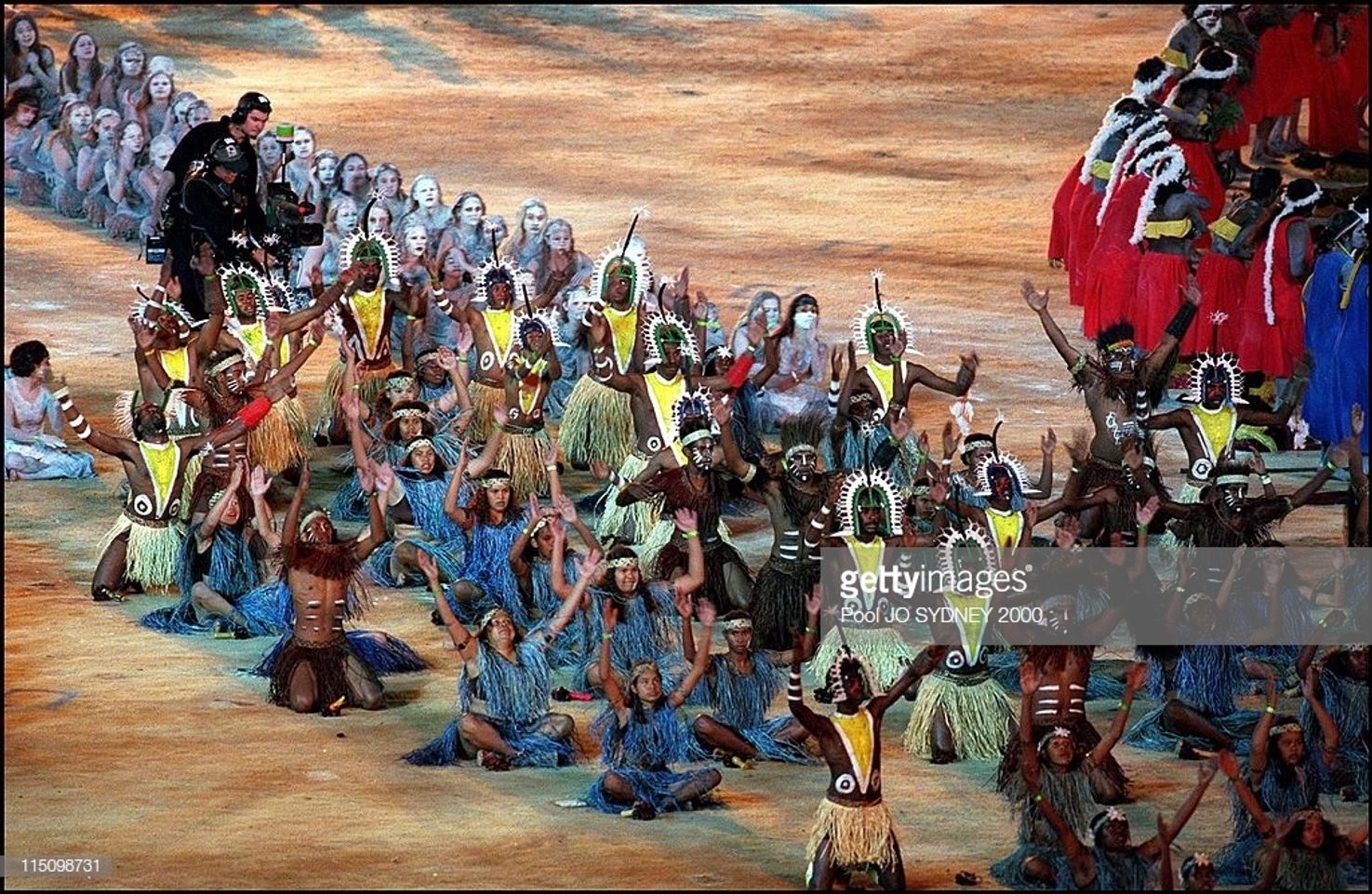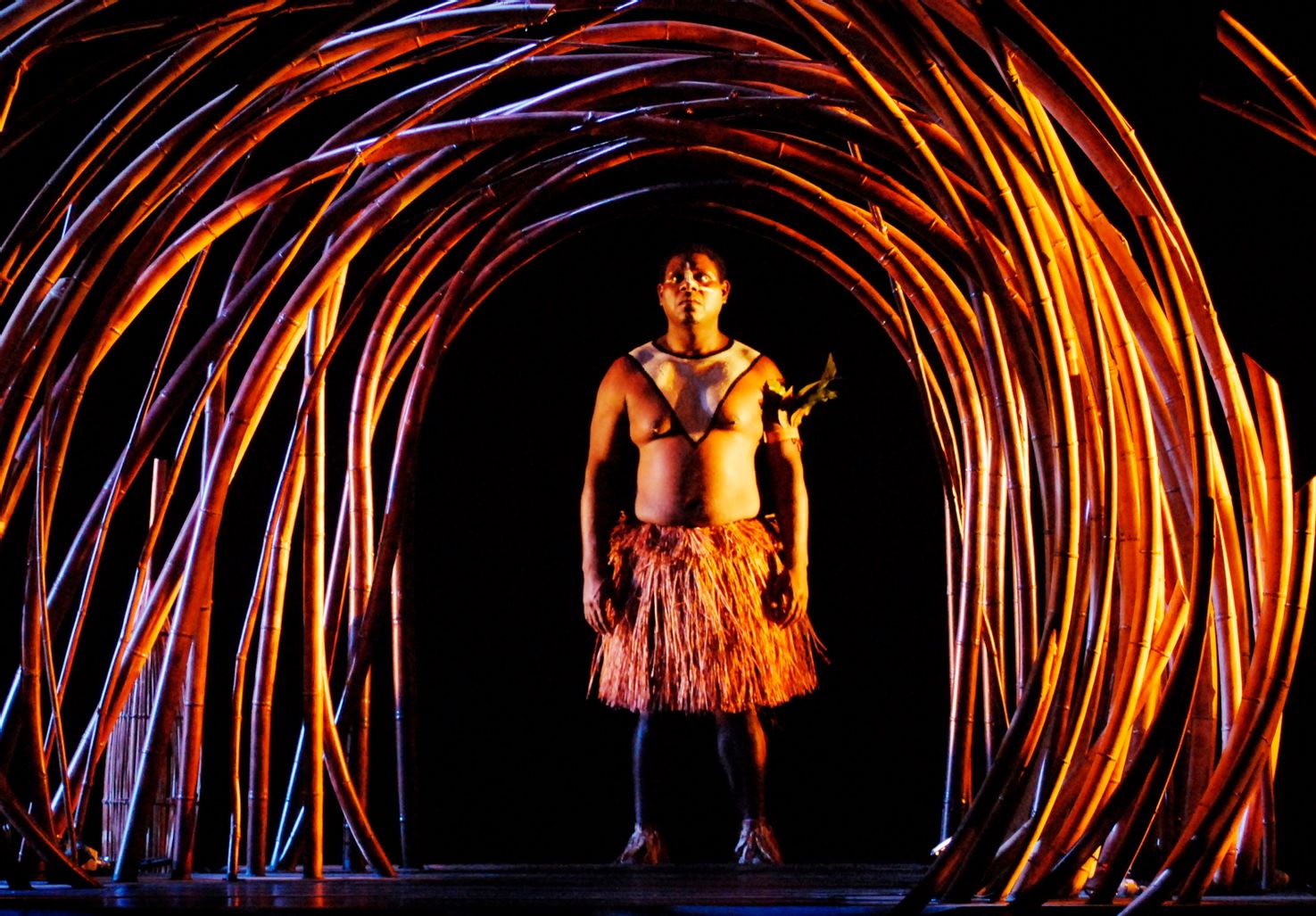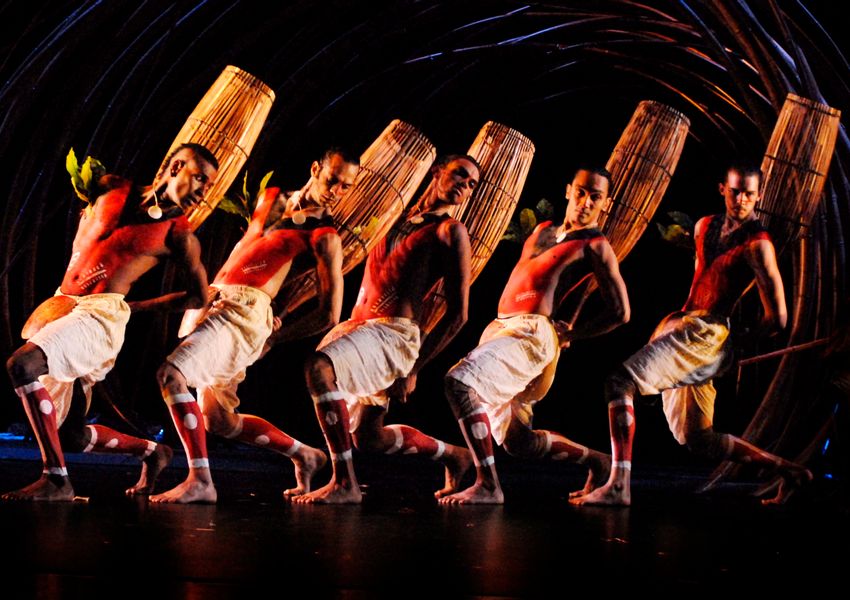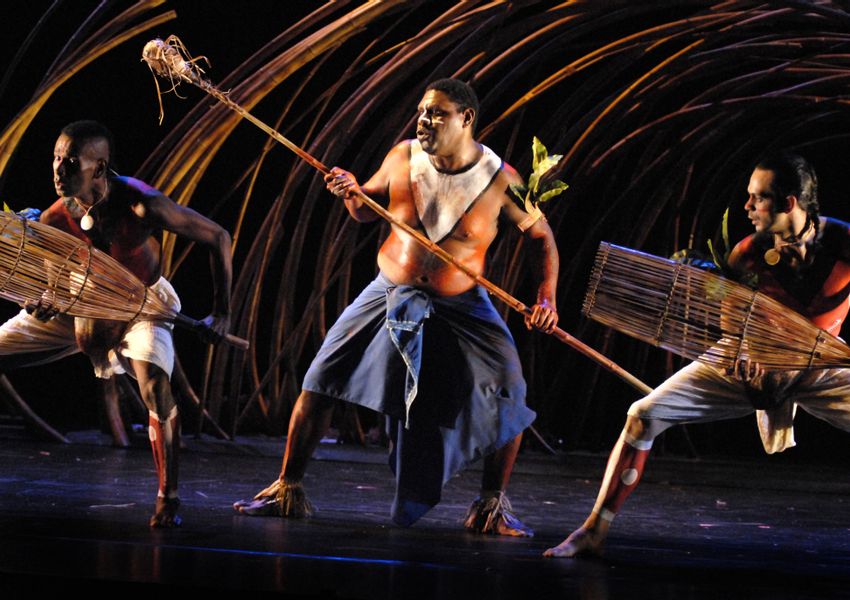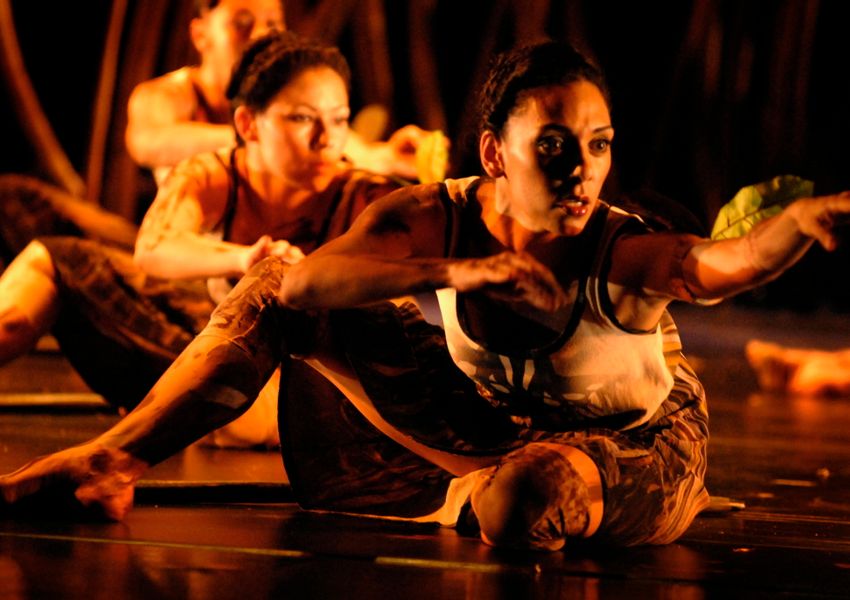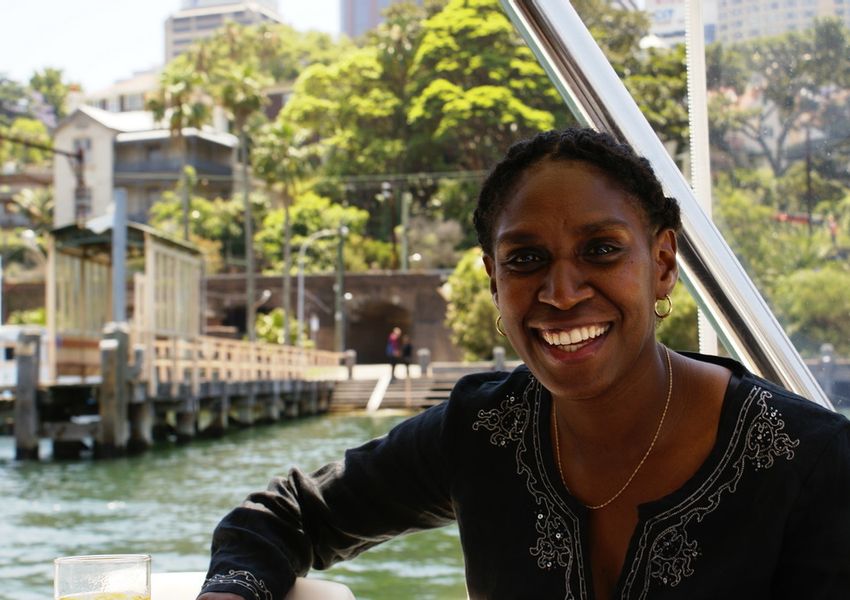Journeys
Elma Kris explores her long-standing relationship with Bangarra
Growing from the shy, young NAISDA student to outstanding performing artist and choreographer, Elma Kris shares her story...
Growing from the shy, young NAISDA student to outstanding performing artist and choreographer, Elma Kris shares her story...
"I didn’t have the confidence to be in Bangarra because as a NAISDA student you would always come and see the shows and be overwhelmed by the production. They were amazing, just magical."
Towards the end of my year as a NAISDA graduate I was asked to choose somewhere to do my secondment and my first thought was the Aboriginal Islander Dance Theatre (AIDT). They came back to me and said there wasn't any funding to allocate me as a student but they said, “We can place you at Bangarra.” I was like, “Oh no!” “No, I don’t want to be in Bangarra, it’s too deadly, it’s too good for me.” I didn’t have the confidence to be in Bangarra because as a NAISDA student you would always come and see the shows and be overwhelmed by the production. They were amazing, just magical.
I was learning everything, not only dancing but also about props and installation, how to move around the stage, how to do really quick costume changes and wear different, more revealing clothes. They want you to wear body leotards which show your legs and your upper torso. Where I grew up women covered everything. I had to adjust my mind. This is the dance world. If my ancestors were half naked then I could be half naked in this modern society. I was so overwhelmed. I said, "Okay, well I can’t be ashamed anymore, I've got to wear these things and discipline myself if I want to be a dancer."
Peggy Misi and I did a contemporary dance piece to represent Torres Strait Islander culture. We did a rhythm dance (a dance without language but plenty of rhythm) to represent all Torres Strait people because the Torres Strait Islands have different languages and different styles of dance. We said, "Why don’t we use elements from the five regions and make it into one rhythm dance?" We incorporated movements from the top western, lower western, eastern, central islands and the tip of Cape York (Bamaga). We wanted to be one tribe even though we speak different languages. We wanted to represent all of the Torres Strait, not just ourselves.
Peggy became a cultural advisor for me with language, song and dance. I grew up on Thursday Island and my mother didn’t speak much of her language. I would only get to see my parents performing, singing and dancing, when we would go to ceremonies. As children we’d sit and watch. Now I had to learn all these traditional songs and dances, how to play the drums and how to perform all this.
It was overwhelming to see the Olympic Opening Ceremony. Normally a male would have been asked to represent the Islands through dance and song but this time the women did it. We choreographed that work under my auntie’s house in Cairns. We had to come up with a name quickly before we went to the schools to start teaching it to the kids! We called it Aumuller because that’s the name of the street where my auntie lives and that was our rehearsal space.
I did a contemporary version of a ‘fish scoop’ dance based on a weris – a traditional Murray Island fishing trap. I called this section 'Wind-raising'. I wanted it to look like the young boys were learning how to use the weris. You have to hit the water with a stick which makes the sardines scatter, then scoop the fish up quickly with the weris.
'Harvesting' explores how the women go gardening. I was inspired by this way of life and the funny little things they do, like a shuffle on the bum to shift around, and the way they tell yarns in language and laugh under the hot sun.
Murray Island has many myths, legends and artefacts. This was a fascination for the first settlers and many artefacts were taken to London for cultural displays and packed away and stored for preservation. Depending on the situation, some objects were traded, some given and some taken. I go to museums and explore the archives and books. I’ve had to travel all the way to London to discover parts of my culture, my history.
When I tour with Bangarra I always carry a few key books on my Island culture. These resources are a sounding board for me, they are a reflection of me and my culture and also a driver of this culture. Our culture is living and ever evolving and these books illustrate where we have come from and we write the pages of where we are going. These books have been my travel companions all around the world.
"I wanted to go back and imagine how my ancestors lived."
Interview with Elma Kris
Article by Maura Edmond
Elma has had a rich and rewarding career as a Dancer, Choreographer, Actor and Teacher. After studying at NAISDA Dance College, Elma joined Bangarra in 1999 and received many awards during her extensive career with the company.
Explore profile